Composite Sheet Piling vs. Traditional Seawall Materials
Real-World Advantages of FRP
In seawall construction, composite sheet piling, especially fiberglass-reinforced polymer (FRP), offers significant real-world advantages over traditional materials like steel, concrete, and timber.
Superior Corrosion Resistance
FRP composite sheet piling excels in corrosion resistance compared to traditional materials. Seawater contains high levels of salt, causing traditional steel seawalls to rust and require frequent maintenance and protective coatings. FRP, with its inherent corrosion resistance, eliminates the need for extra protective layers, reducing maintenance costs and frequency. For instance, coastal areas in the United States that have adopted FRP sheet piling have successfully lowered maintenance expenses and extended the lifespan of their seawalls.
Lightweight and Easy Installation
FRP sheet piling is approximately one-fourth the weight of traditional steel, making it easier and more economical to transport and install. In large seawall construction projects, using FRP sheet piling has significantly shortened construction time and lowered costs. For example, in an Australian seawall restoration project, replacing concrete sheet piling with FRP reduced on-site construction time and eliminated the need for heavy lifting equipment, saving substantial labor and equipment costs.
UV and Chemical Resistance
FRP composite materials offer excellent resistance to UV radiation and chemical corrosion, maintaining performance in harsh environments. This makes FRP suitable for seawalls exposed to prolonged sunlight and chemical agents. Specific case studies, such as those involving seawalls near petrochemical plants, demonstrate that FRP sheet piling outperforms traditional materials in durability and requires fewer replacements and repairs.
Cost Efficiency Over the Long Term
While the initial cost of FRP composite sheet piling may be higher than traditional materials, it proves more economical over the lifecycle of the seawall. For instance, a seawall project in a Canadian port found that despite higher upfront costs, the overall expenses were about 30% lower with FRP compared to traditional steel seawalls due to reduced maintenance and longer replacement intervals.
In conclusion, FRP composite sheet piling offers substantial advantages in corrosion resistance, weight, UV and chemical resistance, and long-term cost efficiency, making it a superior alternative to traditional seawall materials. These real-world benefits highlight why more projects are opting for FRP to enhance seawall durability and reduce overall costs.





